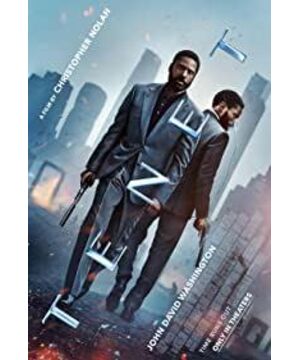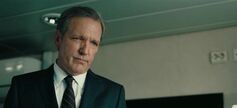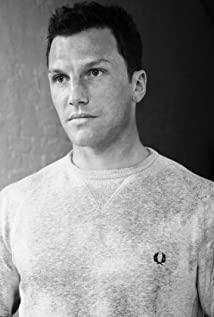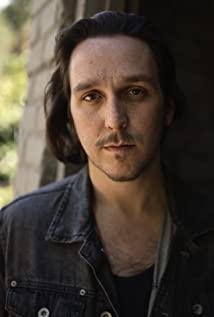In order to scold the "Creed", he forced himself to become a Connoisseur. "Don't try to understand it, to feel it." This is the most ridiculous movie line this year, of course not because there is something wrong with the sentence itself, but because Nolan didn't know that this sentence made the whole movie. For a joke. In the works after "Deadly Magic", the best pair of Nolan team is not Nolan and Hans Zimmer, nor Nolan and Lee Smith, but Lee Smith and Hans Ji Silence, and Nolan is the one who is holding back. The above conclusion is shown in "Creed", because this movie allows us to fully understand what level Nolan is without Lee Smith and Hans Zimmer. Every minute and every second of the film spares no effort to tell the audience how bad Nolan’s director ability can be, and how bad scene scheduling and editing can explain the spatial relationship to the extent of chaos (this is similar to "Eight "Bai" is a good fight, the road shootout and the third act of the war scene are completely indistinguishable from the position of the enemy and ourselves). Is there any effective connection and transition between the first scene of the story and the transition of the scene? Is there any chemical reaction between the characters and the characters, is there any convincing emotional connection, or should I ask, these Is the character really like a person rather than a speech machine? As for the question you want to ask me, do I understand every aspect of the plot? I have to admit that it is not, but did you Nolan tell me "don't understand but feel"? And the above is what the film made me "feel". Although in his previous works he did not regard the characters as human beings, he at least regarded the audience as human beings. Of course, you can also say that "Creed" is "the purest Nolan". I don't object to it because "the purest "Nolan" is actually talking about the worst Nolan. Does Nolan really know what he really does not need the audience to "understand" but to "feel" in his work? It is not a high-concept setting, not those narrative puzzles that need to be clarified repeatedly, and certainly not a tool person who cannot empathize. It is not a rigid camera scheduling, but a sense of narrative and audiovisual rhythm formed by the cooperation of editing and soundtrack. . This sense of rhythm can be intuitively "feel" without the need to "understand" the story logic or high-concept settings behind it. This kind of "good-looking" is a magnet that can continue to attract the audience's attention more than a simple and straightforward visual spectacle, and it is an efficient fuel for images to drive the plot. At this point, I should dissuade a lot of Nolan’s topic fans, so what follows is the focus of this article: how the rhythm in Nolan’s past works mobilizes the “feeling” of the audience, and how it is used in the "Creed "middle How the disappearance of the world became a source of chaos. It is also the first act of a high-concept setting film that needs to explain a lot of story prospects. The first act of "Creed" can obviously be compared with the first act of "Interstellar" and "Inception".
Not only is there a clear distinction and sequence between scenes and scenes, but after a two-minute explanation of the lines, a short plot that distracts the audience is also inserted:
It not only eases the nervousness of the audience in processing the line information, but also explains the development of the relationship between the characters. Afterwards, the explanation continues.
After a complete guided tour, the tour ended with several questions: Is Cooper going? Where to go? who are they? However, the progress of the problem is not completed by moving the scene as before, but directly switched back to the starting point of the tour. The lens is also designed with more changeable scenes and composition to adapt to the multi-person dialogue, which relieves the large number of previous causes. The visual fatigue caused by the front and back of the double dialogue drama continues to bring freshness to the audience.
Finally, with Michael Cain's sentence "Did you find any strange place in the launch room?", the increasingly boring single-scene explanation was interrupted with unresolved questions again, allowing the characters and the audience to return to the previous tour.
Because of the clear understanding of the scene and the sequence between the scenes, when the editing continues the tour that was just inexplicably interrupted and gives it a new purpose, the audience will have an illusion that the information has been missed before, so they are more willing To actively obtain the information thrown out by the film next, to make "compensation". In the first act of "Inception", there is also a long period of information about the prospects-about at the 50th minute of the film, the editing here is richer and more enjoyable, including but Not limited to: Three scenes of panoramic character position change——
Insert the introductory action at the right time (and treat it as a joke)——
Insert a simple and straightforward "line spectacle"-Xiao Li: "One week on the first floor, six months on the second floor, and ten years on the third floor." Ken Watanabe: "I bought the airline. I think it will be more convenient. ."
Briefly insert a plot foreshadowing——
Use the flashback screen to supplement the line information, and clearly distinguish the warm and cold tones between the scenes——
The rhythm of the image pleases the "feeling" of the audience, and only on this premise can the audience "understand" the amount of information in it with a more relaxed attitude. You remember the evaluation of "Interstellar" by a certain neighbor, to the effect that the only thing Nolan made him feel great was that Nolan's three-hour story would not make people feel boring. Nolan does not work well, but he knows how to make large and large dialogues easy for the audience to digest and not feel tired. Of course I used to think so, but now I am more inclined to think that those are the credit of Lee Smith, because in the first act of "Creed", almost all the explanatory utterances are made by a lot of blunt pros and cons. Presented, paragraphs of lengthy and boring dialogues smashed into the faces of the audience without any arrangement. There is no effective transition and connection between the scenes and the explanation of the spatial relationship. It is an unrecognizable environment and unchanged across several major countries. The mechanical utterances of the people, the unchanging bad scheduling. Is there even a literary drama in the first act of "Creed" that makes people "feel" "good-looking"? No. Did Nolan try the rhythm drive in "Inception" and "Interstellar"? In fact, it was tried (Neil planned a cross-editing of a large number of dialogues before and after the Freeport plane accident), but its mechanism of mobilizing "feeling" was completely ineffective. The main description of the free port, everything on the screen, a car driving into the free port, Neil gets off the car, the static dispatch of the previous scene and the movement dispatch of the next scene and the connection of the meaning of the station make people think that the editing point means the advancement of the narrative. Being cut back to the editing point of Gao Mei’s dialogue with the male protagonist again, it is a meaningless reciprocation between the two scenes, just to cross and intersect each other, which can’t constitute an effective complement of information. The male protagonist said to Neal " She said...(past tense) "Undoubtedly, the order of the two lines is again emphasized, making the cross-editing even more tasteless. When the audience had just had time to clarify the editing logic and had not had time to "understand" the content of the lines, the film entered the next round of cross-editing with repeated scenes. When the amount of information in the lines is already so much that it is difficult to "understand", even the editing logic that has always only been "felt" has become something that needs to be "understood". In the middle section, when Neil entered the airport warehouse and listened to the tour guide introducing the security system of the artwork area, the electronic soundtrack that should have matched the tense plot was strengthened here for no reason, and even overwhelmed the tour guide’s voice. The completely unmatched soundtrack was achieved. Awkward rhythm.
Of course, you can also ask, why do you say that this soundtrack is used to match the intense plot? Sorry, I didn't say that, it was Nolan that did it. The soundtrack of Freeport did not first appear here, but the first sounded when the male protagonist and Neil sneaked into the arms dealer’s mansion. It was a typical spy film’s mission, and the atmosphere and melody were contrasted. The position allows the audience to deepen the inherent impression of this/type of electronic music-it is suitable for this kind of plot.
So when this soundtrack appeared in a large number of cross-edited literary dramas later, and it was strengthened without any signs of sudden action/plot, the audience could only "feel" the noisy, and the serious sound and picture misalignment. Lee Smith clearly knows how to use editing to give Nolan's rigid scheduling in several single scenes, while "Creed", which has replaced the editor, clearly uses editing to make Nolan's rigid scheduling in several single scenes. Extensive, so that we can successfully realize that the editing is really just for the protagonists to change a few places to read the lines. And the editor was probably confused by himself, thinking that the male lead and Puglia could talk to another place, but actually performed a "jump cut" in a single scene: Puglia got up while speaking, and the male lead followed up. Without interrupting the lines, the two of them were teleported directly to the balcony by the editor.
Let’s not talk about the literary play, let’s talk about the arranging features of Nolan’s previous climax plays: the strong rhythmic soundtrack that runs through the entire track drives the scheduling in a single scene or the cross-editing between multiple scenes, creating an extremely intuitive and easy-to-perceive Audio-visual rhythm. In layman's terms, this experience is similar to watching the "high-burning mixed cut" (no derogatory meaning) on station B, watching the screen and the soundtrack step on each other. The first is the action/emotion "stepping point" in a single scene, such as the huge wave in "Interstellar": the camera shakes along the sea surface, and the beat of the soundtrack suddenly accelerates. When the camera pans to the top of the huge wave, the soundtrack Also reached a climax at the same time.
The progress bar has also been shown to you. Open the original soundtrack to play Mountains and you can directly fill in the picture. Of course, there is also a type of "stepping point", where the aggravation of the soundtrack is not signaled by the sudden change of the plot or action, but by the lines:
Regarding why the sudden turn of the plot or action is not used as a signal to accentuate the soundtrack here: we can see that the real sudden turn of action actually happened long ago, that is, Cooper decisively started the engine in the face of the spinning and falling Eternity Catch up. But the audience at the time was still the same as Brand, in the aftermath of an undecided emotional after witnessing the explosion. They didn't know what Cooper was going to do. So Brand asked the audience and got a short and powerful line: "Connect." The audience was like that. At the beginning of the dream, the soundtrack quickly dropped its accent, completing the response to the audience's emotions. What is "feeling", this is what can be "feeled". These examples abound in Nolan’s previous works. It makes the picture seem to follow a certain internal melody of force majeure, cleverly concealing the weakness of the single-lens scheduling, as if a weak chord has been melted into a grandiose. In the symphony. The soundtrack makes the image, and the image makes the soundtrack. When we walked out of the movie theater and turned on the music player, the soundtrack that "focused" on each plot of the film can still give us a strong "sense of sight".
The second is that multiple story lines accompany the cross advancement of the soundtrack, allowing the editing points, sudden changes in action, and the sudden turn of the soundtrack to form a gear set that closely meshes with each other, driving the narrative machine to run at high speed. There is no need to move out of Bach to understand Nolan, it is too much to praise him. In the past, Nolan’s treatment of the main events in the film was MV style, especially the climax passages of "The Dark Knight", "Inception", "Interstellar" and "Dunkirk" are intuitively "good-looking" because they are in the plot. The sense of rhythm and rhythm in the arrangement forms a kind of musicality of the image, allowing us to "see" the tunes composed of these alternating pictures. This method does not pay attention to the wonderful and complicated scheduling in a single scene. On the contrary, it requires that the scheduling in each single scene is simple, intuitive and easy to understand, so that the fragments of these scheduling actions can be made into a set of self-contained systems. Mutually exclusive collections trace the melody of the soundtrack. A typical climax in "The Dark Knight" is about the 45th minute of the film.
The three lines that were cross-edited were: Rachel and Harvey were talking in the corner of the banquet, Gordon informed the chief that the latter was the target of the clown, and the judge received an anonymous envelope in the car. Although we still don't know the inner connection of these three lines, the processing of cross-editing seems to be another kind of warning. After all, the suspense of the latter two storylines is already enough to make people nervous, but Rachel and Harvey, who seem to be in a safe zone, are cut into a position juxtaposed with the latter two storylines, adding another layer of psychology to the audience. It implies that the suspense superimposed here was created by editing. Afterwards, the soundtrack grew stronger with the signal that the chief had drunk poisoned alcohol.
And after Bruce Wayne stunned Harvey, there was rapid percussion.
The actions of Gordon and Wayne on both lines are responses to the coming crisis. Nolan allowed the suspense to increase again following the rhythm of the editing and soundtrack, and quickly released the accumulated suspense when it reached the highest frequency of the editing.
The clown succeeded one after another without showing up. The high-frequency cross-editing and soundtrack created a strong sense of suspense and horror: Where is the clown who planned all this? Then, the clown suddenly appeared at the seemingly safest banquet, and the last suspense was released.
There was a gunshot and the percussion stopped abruptly. The coordination of audiovisual rhythm and clowns completes the multiple strangulation of the audience, and the alternation of the three lines achieves the effect of 1+1+1>3.
Nolan needs Hans Zimmer's strong melody and rhythmic soundtrack to set the tune of each of his highlights, while Lee Smith's editing is the rhythm tracker of the soundtrack. Of course, the driving force of suspense cannot be ignored. This is true for "The Dark Knight" and so is "Interstellar". Let’s take a look at the broadcast of a cross-edited YQY-Vader that was generally complained by neighbors .
Previously, there were some self-righteous interpretations of the broadcast of the blank shore
But later I saw a very enlightening insight from a friend of mine, and I felt that it was not necessary to "understand" in this way, just as it was not necessary to "understand" whether the internal logic of these story lines is rigorous. , Just go to "feel" its rhythm and rhythm of the radio broadcast (this broadcast inspired most of my article)
Of course, the editing and soundtrack of this paragraph is still based on suspense to drive the narrative. Different from "The Dark Knight", we can clearly see the moment of accumulation and release of a single suspense in "The Dark Knight", while a section of "Interstellar" is an alternating rise of multiple suspense. Can Cooper, who is in danger, contact Brand? Why did Murphy turn around? Can Brand arrive smoothly? Can Cooper stand it up? Why did Murphy rush into the cornfield? What happened to the mistake Romley discovered? Will Brand's warning allow Romley to evacuate in time? We found that the process of these suspense from happening to resolving is inlaid with each other: one suspense has just been resolved, at the same time another suspense is developing, and another suspense is in the bud, and finally formed a wave of future. Ping Yibo has another rising "Shepard Scale".
Then, please click on Coward in the original soundtrack, pull the progress bar to the 5th minute, and "feel" how Hans Zimmer used piano and strings to accurately describe the spiraling form of suspense.
When Nolan arrived in "Dunkirk", he actually expanded the treatment of the climax in "Interstellar" directly into a whole movie. It abandoned the physical concept, the tedious narrative, the background explanation, and the role modeling. It directly used the editing and soundtrack to lay out inhuman rhythms and melody, bringing the most direct sensory oppression, and contributing to the inhumanity of this war. Make a comment. As a result, the audience has empathy for these characters whose names cannot even be remembered, because what the characters feel is what the audience "feels". For this reason, not so much I think "Dunkirk" is his best work, but it is Nolan's most ingenious possession. The minimalist script eliminates lengthy dialogues and tasteless emotional descriptions. The open geographical environment and uncomplicated setting make it easier for Nolan to select scenes and spatial scheduling that Nolan is not good at. If "Creed" is "the purest Nolan", then "Dunkirk" is "the purest Lee Smith-Hans Zimmer". Thanks to Nolan, who has no feelings, and let me knock on the male CP with no feelings, and I shed tears. "Dunkirk" is just one example. This is the most shocking interplay of editing and soundtrack in all Nolan's works. You can go and pull this paragraph by yourself, I won't say more.
After talking about the climax part of Nolan's previous works, let's look at "Creed" again. The stepping points of the action and the soundtrack are also included in "Creed".
When the soundtrack progresses to the "charged" stage as shown in the progress bar, what we see is the scheduling and editing that are insensitive to this "charged" action in the soundtrack, and still trivially show the protagonists. Dressing, buckling, adjusting the machine... the sudden stop of the soundtrack during ejection loses its original audio-visual tension. In the section before the carjacking, Neal drove the male protagonist to perform the task, stopped by the fire truck, and signaled that the male protagonist got out of the car and climbed onto the fire truck. The soundtrack was aggravated. But the camera scheduling at this time seemed at a loss, because this action was explained by the camera in Neal’s car as an ordinary transition: the audience is equivalent to sitting in Neal’s car and witnessing the male protagonist. The car, through the window of the car, saw him climb onto the fire truck again. The action node was dulled by the sluggish scheduling and editing into a cutscene. The suddenly aggravated soundtrack was more like the node attribute of the action, unable to interact with the audience. "Feeling" forms an interaction.
If "Creed" is really an inhuman mechanical construction that Nolan deliberately prevents the audience from understanding, as some friends say, then he would not spend so much space on the villain couple. In addition, Nolan is Nolan. There is no need to think of him as Haneke in the 90s. Nolan has no idea about the inhuman nature of his works. Arranging a heroine and a child, thought it was emotional and human? Don’t you feel embarrassed to force the choice of life and death when the audience has no recognition of the emotions between the male and female actors? Kenneth Branagh’s acting skills are also catastrophic. His role, from demeanor to stupid lines, seems to be directly out of Tommy Wesser’s movie. "If I can't have you, then no one can!" Nolan can actually write such a line, it's incredible, I'll spit it out first.
When he threw out a series of stupid lines (I remember he probably said at the time like "I want you to see what an angry lion looks like..." This two-to-the-most extreme), editing, scenes, and music , Everybody cooperates with his funny juggling seriously and seriously, this kind of cold humor is really hilarious. The combination of multi-line cross-editing and soundtrack is also available in "Creed".
Throughout the third act, starting from the preparation stage, the male protagonist, Neil’s red and blue army, the female protagonist and the villain’s three lines of dealings are all cross-edited together, and a posterity runs through. But the problem is that the war line and the female main line, regardless of the nature of the actions of the two, or the mood of the audience when they watch them, are very different, and they cannot be integrated by the same soundtrack. Looking at the "hard work" cross-editing, I only feel the embarrassment and ridiculousness of this strong twisting rhythm. In Nolan’s previous works, the most intuitive “good-looking” that can be “felt” ceased to exist in The Creed, but he did not give up resolutely, nor did he find another way, but a lamely strong posture. This is even more ugly.
As far as "Creed" is now, I can only understand that the "good-looking" parts of his previous works may not even be his own credit, but the result of the cooperation between Lee Smith and Hans Zimmer.
——————————————
I used to think that Nolan’s insistence on film, especially real shots, is a manifestation of his classical and old-school principles, and deserves recognition and praise. And after reading "Creed", with all due respect, what I feel is not his old school, but a turtle. When the terrorist smashed the cello with one foot, when the protagonist smashed the opponent on countless paintings in a fight, tons of gold bars were spilled on the road, and when a 747 crashed into the warehouse and caused a scene of nothing What did Nolan expect the audience to "feel" when watching the explosion? And what does he think the audience can feel? Is it the beauty of wonder? No, it's the pleasure of burning money. Most of the sighs from the audience were not "good-looking" but "so expensive". "Creed" concentratedly exposed the nouveau riche thinking that Nolan, who now sits on the capital, displayed in the real-time spectacle. However, when the audience walked out of the theater, what they thought was that although it was not well-watched, its real shot production did burn a lot of money, so they made up for the money operation of "worth the fare" (I invested in a bombing plane! I'm great!), thus obtaining a false and cheap satisfaction, a spiritual victory method, while the unattractive spectacles in the movie and the real audio-visual feelings of the audience when watching it are obscured. This kind of real-time spectacle thinking of the nouveau riche maneuvering with huge sums of money is in line with his technical hegemonism tendency that has appeared in the past and completely exposed in the "Creed" to manipulate high concepts (quoted from the short comment of brennteiskalt by neighbors ) Broadcasting ), two sides of one body. Everyone who is interested, welcome to read a manuscript I wrote to Taochang some time ago https://mp.weixin.qq.com/s/SUI0Zk0QBIbLwYaOVjwoRQ), with the help of the text of the film, I talked about how Nolan treated his real-life complex in "Interstellar Crossing" frankly, and then compare the real shots of "Creed", you will find that the latter is not only a terrapin, but also hypocritical. Persistence to a certain shooting system should never be a reason to praise or criticize the director, but to see whether the director makes the best use of the way he chooses. Therefore, I also implore Nolan to give up the 70mm film IMAX. The bigger the picture will only enlarge his flaws in scenes and scheduling (a lot of close-up scenes of dialogue scenes face up and down, so that the audience's eyes are on the huge screen. After a while to this moment, shaking his head and shaking his head during the whole process of watching a scene, the large format has become a burden to watch, not to mention excessive subtitles); I also urge him to give up the spectacle of real shooting, and will not schedule what to shoot. , Spectacles that are not ornamental are also called spectacles? (So are there any good-looking real-life spectacles? Yes-"Mad Max 4". If you think this is too demanding for Nolan, then there is another-"Fast and Furious 8" Skyfall Car Rain, in terms of viewing, Nolan is not as good as this.) Do you think the bombing of the plane is unpleasant? Let me tell you, how much money was spent on real shooting! You don't understand that noun? Let me tell you, what an awesome concept that is! Do you think the soundtrack is so ear-ridden? Let me tell you, this soundtrack is the same when it is played backwards, it's awesome! Have you found it? These pleasures do not come from the movie itself, but from these "off-site information", from self-movement, and Nolan's pua skills are real. Does "Creed" have any real-life spectacles? some. In the third scene of the war, the building was restored and destroyed twice, which was the only part of the whole movie that allowed me to "feel" its "good-looking". This kind of "level" setting should run through the entire battle, rather than just appearing as a special climax. Because this solid "level" is not only the most intuitive display of time clamp tactics, but also indirectly explains the relative spatial orientation of the red and blue teams (although it is also very general). However, with the exception of this clip, the rest are sparing no effort to show Nolan’s terrible scene scheduling, let alone explaining the position relationship between the enemy and us, even the position relationship between the red and blue teams is not clear, which greatly allows me to find This is what I felt when I watched the war drama of "Yai Hundred": chaos. To be honest, the one-forward and one-inverse story design adds a lot of difficulty to scene scheduling. Under this premise, setting and photography should strengthen the spatial sense of the "route" or "level" as a point of view for both the forward and the reverse. A constant frame of reference. This is why the design of the checkpoint-style forward and reverse bombing building is good, even if the audience cannot fully "understand" its internal logic. Editing can also be cool. But in the two road chase scenes of a forward and a reverse, the space of the "route" is broken and incomplete, thanks to poor scheduling and editing. How many viewers saw that there were actually four cars on the road when the villain evacuated the black SUV during the first time?
In the shootout between Neal and the villain, from the time the male protagonist was taken into a car by the villain, until they arrived outside the red and blue room, there was no explanation of any transition, there was only one editing point for the first time. I thought the gun battle happened outside the red and blue room.
The third act of the war scene, not to mention the double disaster of scheduling and editing. Another point is that a large number of fixed positions attached to physical props in "Interstellar" and "Dunkirk" have also disappeared in "Creed".
If "Interstellar" uses this fixed lens to shoot space scenes, we can also criticize its rigidity, then when the fixed lens is used more frequently in "Dunkirk", it brings the most direct Sense of presence: The audience was repeatedly tied to the falling planes and sinking ships, and they could only watch themselves being submerged by the sea.
In addition to the characteristics that are particularly needed for the creation of a sense of presence in war films, the fixed lens and the entity to which it is attached have also become a reference for the passage of time. If you don't understand this sentence, just look at the picture below.
If Nolan can design more "levels" similar to the bombing of buildings in "Creed", or even fix the lens on a stable object in the "levels" like "Dunkirk", let the audience If he can use this as a reference for time and space, then his coexisting scene scheduling may be more efficient, at least not so chaotic.
The situation in "Creed" is like Nolan lost the fulcrum of space in the forward and reverse time flow, unable to find a place to stay in the rapids. In the end, he was kicked around like a ball by the high concept he set, and he felt good about himself.
View more about Tenet reviews











